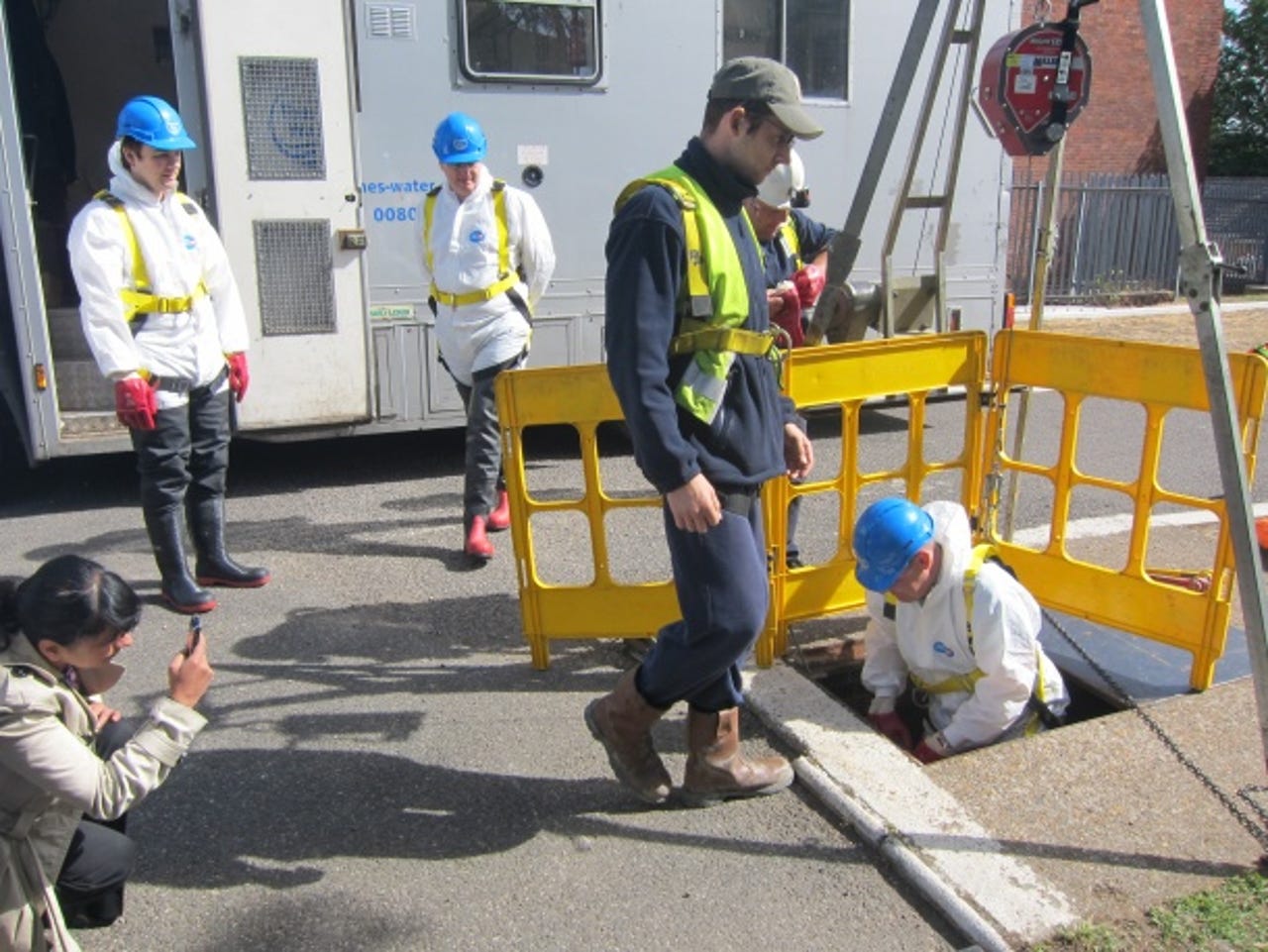Down the sewer to inspect Geo's fibre


Climbing down a sewer manhole
Geo is a super-fast broadband company that sells dark-fibre connectivity, mostly to businesses.
On Tuesday, Geo took ZDNet UK underground near the London 2012 Olympics site to see the sewer-based cabling that carries the company's fibres under the capital. Geo has 107km of cabling in London and around 3,000km overall across parts of the UK.
Geo does its initial connection planning using Google Earth, which helps it figure out where the customer's building is, how far the network is from those premises, and where the best manhole access to the sewers is to be found.
See more photo stories on ZDNet UK.
Sewer with cables
Geo's cables are installed around shoulder height. This is partly to ensure that they are most convenient for standard sewer entry points for such cabling, and partly because of the dangers that lie lower down in the sewers.
The London-based company is toying with the idea of installing loose-lying cable, rather than bracketing the cable to the sewer wall. However, loose-lying cable would be threatened by the jetters that are used to clear sewer blockages.
Jetters blast the blockages — which usually consist of solidified fat from nearby restaurants — with high-pressure water, then scoop back the loosened material. It is during the scooping that loose-lying cables would run the risk of getting tangled.
Tangling would be disastrous for fibre-optic cable. Even excessive bending would disrupt the passage of the light, which is why so few junctions are used in Geo's sewer systems.
See more photo stories on ZDNet UK.
Fibre cabling
Each of these four colour-coded cables contains 144 fibres, although the cables in particularly high-density areas such as Docklands carry 288 fibres each.
A single pair of fibres can carry eight terabits of data per second, although none of Geo's customers actually uses that much capacity. As dark fibre is simply sold with usage up to the customer, Geo could not specify the maximum speeds its customers are achieving. It estimates the maximum is in the multiple tens of gigabits per second.
The cables are designed and tested to withstand two notable hazards. They are just wide enough to stop rats being able to chew them, and they are tough enough to withstand the largest common object that may float into them at speed: the beer can.
See more photo stories on ZDNet UK.
Sewer gate
The Victorian sewers that carry Geo's fibre were built in the 1860s under the guidance of Joseph Bazalgette. The civil engineer — so the story goes — calculated how much space would be needed to serve the area if it were fully populated, then doubled that capacity. As a result, the sewer system had sufficient capacity for the next century even though Bazalgette had not factored in buildings with many storeys.
The sewer system's brickwork is still in remarkably good condition. The tunnels actually have a parallel — and equally cavernous — system below them, which is used for overflow. However, as the lower system flows straight into the river where several Olympics events are to be held, the games organisers have ordered the overflow threshold to be raised.
The gate pictured above is for emergency overflow situations, when both levels of the sewer are allowed to evacuate into the river. While the winching mechanism above is modern, the gate itself is the original Victorian installation.
Get the latest technology news and analysis, blogs and reviews delivered directly to your inbox with ZDNet UK's newsletters.